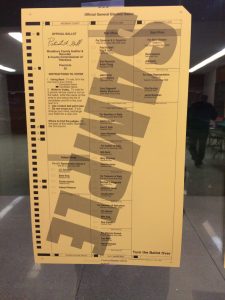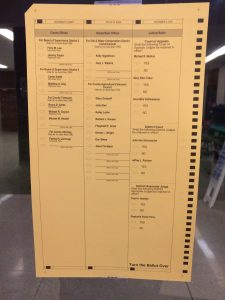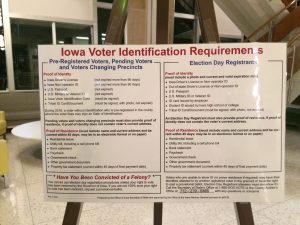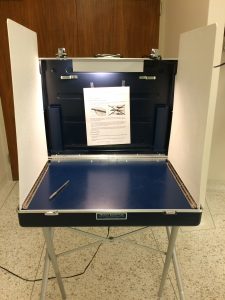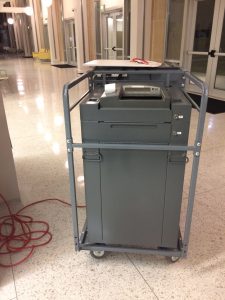Dec 10 2018
Profile Final Draft
What is it like to be a new professor at a liberal arts college and brand new to a part of the country you never been before? That question is precisely what Dr. Barbara Prince is facing currently.
Dr. Barbara Prince is a new professor at Morningside College. She works for the Department of Social Sciences. This semester, she’s teaching two classes: sociology of gender beyond pink and blue and elementary probability in statistics.
She started at Morningside in August of 2018, which makes her a freshman among the other professors and of the college. For new professors, they go to a new faculty seminar, which meets once a month.
“All of the first, second, and third-year faculty and we talk about a book, so it’s kind of like a first-year orientation for faculty.”
She talks about how in the seminar they talk about Morningside, all of the acronyms, what’s going on and happening on campus. She’s also learning from the other professors too as the semester progresses.
Dr. Prince is not from Iowa nor the Midwest part of the United States. She was born Seaford, New York. It’s on Long Island and 40 minutes outside of New York City.
She has one sister named Katherine and two cats named Zelda and Luna. She lived in Seaford her whole life until she went to college.
Some people may not know this, but she’s shy and is an introvert which may surprise many because she is a professor and has to stand up in front of people and talk to them. Her love and passion for teaching overpower her shyness.
She was also a professional Irish step dancer, starting at the age eight and ended her career when she was in college. Her career lasted for 15 years, and it ended when she ruptured her Achilles tendon. She also played basketball as well.
Dr. Prince was an undergraduate at Elizabethtown College in Pennsylvania, which is similar to Morningside College. Elizabethtown currently has 1700 students, is a liberal arts college, work closely with the professors.
She said her experience being at Elizabethtown made her think “that this is what I want to do (teach).”
She went for her master’s degree at West Virginia University in Morgantown, West Virginia. She received a master’s degree in sociology and a certificate in university teaching.
At West Virginia University is where she started to get the “how-to” in teaching. She then went for a Ph.D. degree at the Bowling Green State University in Ohio.
Her love for sociology started when she took a sociology class for college credit as a senior in high school. She describes the difficulty of the class and how it changed her way of thinking.
“I thought that it was super, super, super difficult. I would spend HOURS, every night working on it.”
This class help Dr. Prince realize that this is the subject that she wants to teach one day. It also challenged and shifted her thinking.
She moved away from sociology when she went to college. Initially went to college to be a music major, because she was in the marching band and a drum major. But, she freaked out and didn’t want to the auditions.
She then changed her major to history. The reason is that she likes history. But when she was signing up for her second-semester classes, the only ones available were the sociology classes.
She then became a double major in sociology and history. As she was taking the sociology classes, she realized that she’s hooked and that this is it.
She made her history major into her minor and dedicated her time to the sociology major.
“It is like putting on a new pair of glasses.”
Being here at Morningside, it brings back memories of her time at Elizabethtown College. She likes the environment of how the students want to learn, are engaging in their classes, wanting to meet with her, and how involved they are in sports and events happening on campus.
“I really love it.”
She said that her start at Morningside has been pretty good so far. She’s learning all of the traditions that Morningside College brings.
She said that it has been very challenging “trying to learn the culture here.”
She’s enjoys teaching and has been wanting to do this since she was an undergraduate in college.
“It’s been really exciting to finally get to be a real professor. It is stressful right now, but I’m really enjoying it and having a good time.”
It is not just adjusting to Morningside but also adjusting and getting used to being in the Midwest. She said that it is completely different from the East Coast.
“People are nicer here. They say hello. They greet you. Everyone walks around with their heads up, making eye contact. In the city, it doesn’t happen.”
For her, this is the exact job and exact place she wanted to work at in her career. That made it easy for her to decide to take the job at Morningside College.
It was complicated for her to take the job at Morningside. For her interview, she was only in Sioux City for 24 hours and loved it.
Dr. Prince closest relatives are eight hours away from Sioux City and had no one that she knows in Sioux City, which made it complicated for her.
What helps her out is that Morningside is a welcoming community. It brings a home environment and the faculty help each other out, especially towards new members.
“People are inviting me over to their houses for dinner. I moved in and had to leave my apartment for two weeks and needed someone to watch my two cats.”
One of the faculty members watched her cats, and she didn’t know Dr. Prince at all. Her and Dr. Valerie Hennings go out for lunch and get coffee together.
“They want you to feel like you belong. They want you to feel welcome. They see themselves as a Morningside family. That trickles down to the students and trickles up from the students.”
It is still hard for Dr. Prince to get used to people saying hello. She thinks that people are talking to someone else but in reality, they are saying hello to her.
She does miss her East Coast home a lot. She misses the people and the culture.
“I miss my friends and family. I have only been here for a few months. It’s going to take some time.”
She doesn’t know how long it is going to take for her to adjust to being here. She heard that the first year is a whirlwind and just survive it.
After that first year, it will be easier for Dr. Prince. She loves her job and her career at Morningside and wouldn’t change it for anything. All she has to do is get through the upcoming semester.

